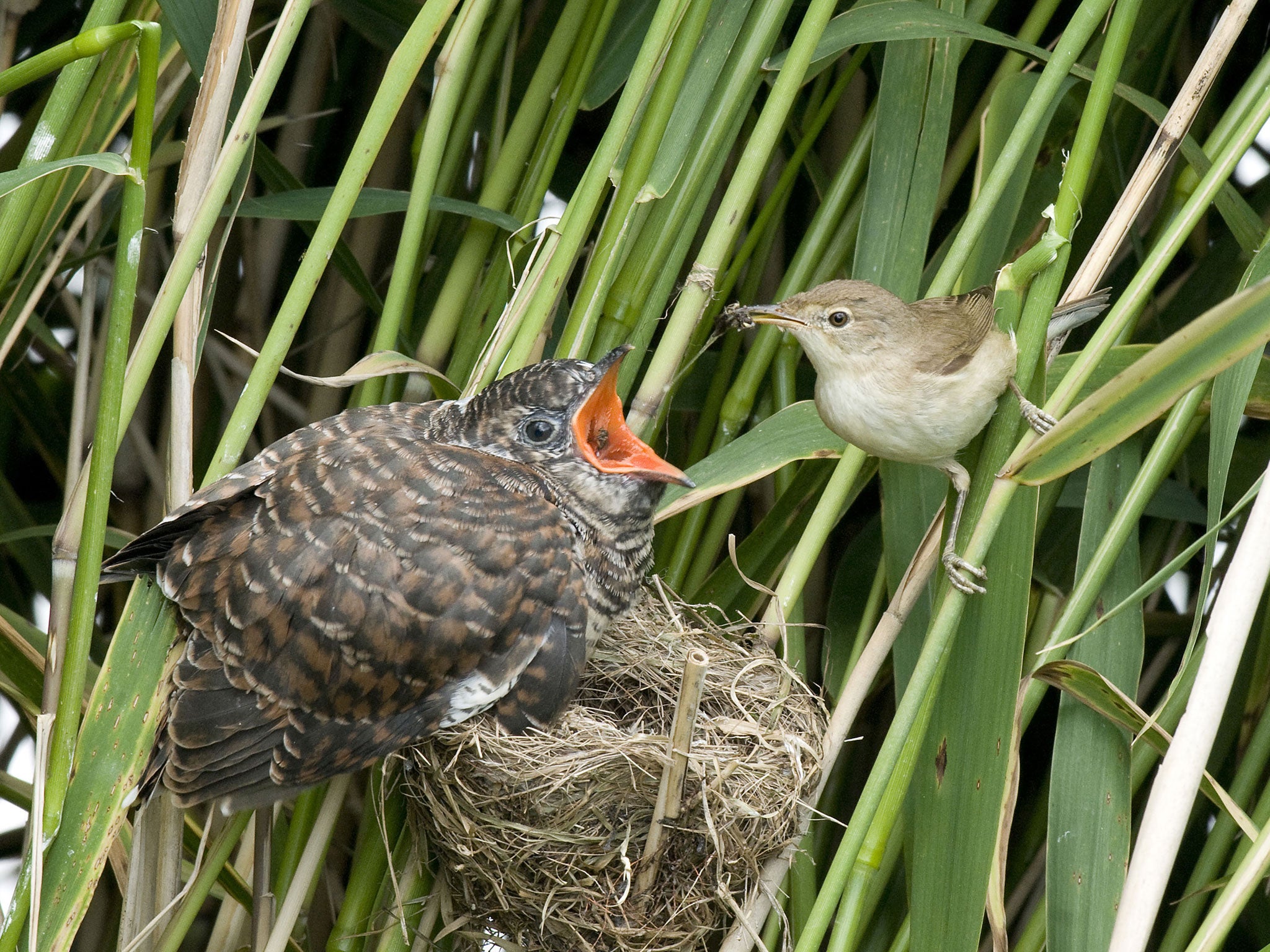Nature Studies: The hidden beauty of birds’ eggs is seen in a new way
Goldcrests warm their eggs by pumping blood into their legs to turn them into immersion heaters

It’s not often that a novel way of looking at the world comes along, even one in a minor key, but such is the case with a new book by one of our leading science writers, Professor Tim Birkhead – The Most Perfect Thing: Inside (and Outside) a Bird’s Egg. The thing in question is a bird’s egg, and what Birkhead does is show to anyone interested in nature why any such object is a source of wonder and fascination – but not in the way it used to be seen.
All through the 19th century and for the first half of the 20th, the eggs of wild birds, many of them exquisitely coloured and patterned, were avidly collected to be displayed and kept in cabinets as natural jewels, just as butterflies were. The phenomenon of egg-collecting was huge, with some men (it was virtually always men) becoming obsessive and amassing collections of thousands.
Initially, it was seen as a science, a perfectly respectable branch of ornithology. It had its own scientific name – oology – and its own learned society, but gradually “egging” became downgraded to a mere pastime, and eventually fell out of favour completely, as being wholly contrary to the interests of conservation; the Protection of Birds Act 1954 made it illegal.
Professor Birkhead and I are both old enough to have ourselves experienced, as small boys growing up in the 1950s, what still seemed then the “irresistible appeal”, as he terms it, of wild birds’ eggs. Indeed, you may get a feel for it from the dust jacket of his book, a plate from Coloured Figures of the Eggs of British Birds, a luxurious guide published by Henry Seebohm in 1886. From the egg of the treecreeper at top left, to that of the golden oriole at bottom right, the delicate beauty is all too apparent.
Yet this appeal became demonised as a dwindling band of “eggers” defied the law and continued to hunt and ruin the nests of rare birds especially, pursued by the RSPB, and in some cases – rightly – sent to jail. It is now illegal to sell any wild bird’s egg in Britain, and indeed to possess one at all, unless you can show convincingly it was taken before 1954.
But with this demonisation, interest disappeared: the whole subject of birds’ eggs seemed uncomfortable and off-limits, and very little, if anything, has been written accessibly, authoritatively and in depth about it for more than half a century.
And if you understand this context, you see why The Most Perfect Thing, published next month by Bloomsbury, is such an innovative work.
Birkhead has made birds’ eggs interesting again, by giving us a new way of looking at them: not as commodities to be drooled over and collected, but as wonders of natural science, as “self-contained life support systems”.
How does the egg get its shell inside the bird? How do the coloured markings get on it? Why are they there, when some eggs are plain? Why are different eggs the shape they are? How do growing chicks breathe inside them? Why do some chicks hatch blind and helpless, while others can run around and feed themselves at once? And which end of the egg comes out first, the round end or the pointed?
Birkhead answers all these basic questions with panache, but other, stranger facts caught my imagination even more (not least his passing remark that the record number of children borne by a woman is 69, in a series of multiple births). For example, I was fascinated to learn that tiny goldcrests warm their eggs in the nest by pumping blood into their legs to turn them into immersion heaters; and some birds need a supply of snails, to obtain from the snail shells the calcium to build eggshells of their own, and may fail to breed if they can’t find it.
Yet it is the incredible mechanisms of the life-support system, which Birkhead lays bare with perfect clarity, that are the most wondrous.
The 19th-century American clergyman and political activist Thomas Wentworth Higginson said: “I think that, if instantly required on pain of death to name the most perfect thing in the universe, I should risk my fate on a bird’s egg.” His unusual claim is borne out by Birkhead’s riveting book.
Join our commenting forum
Join thought-provoking conversations, follow other Independent readers and see their replies
Comments
Bookmark popover
Removed from bookmarks